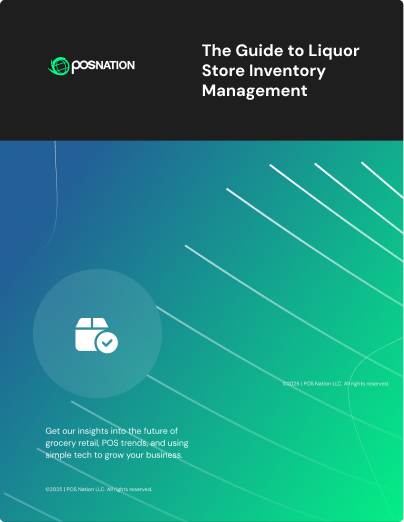So you're in the market for a new point of sale (POS) system for your growing liquor store? It’s a considerable investment, and a decision that shouldn’t be taken lightly.
Unfortunately, the stakes have never been higher.
If you invest in the wrong system for your liquor store, you could easily overspend on a solution that fails to deliver all the great features and benefits that your employees and customers deserve. Additionally, massively complex tools make it difficult for employees to utilize.
So what’s the solution?
You need to start with a bulletproof budget. Of course, that’s easier said than done.
We’ll show you a few simple and effective ways to budget for your new liquor store POS system.
Liquor POS Cost: 3 Steps to Budget for a New System
Before we begin, some context: most POS system providers on the market today will talk to you about all the different bells and whistles that their product offers, steering you toward the priciest solution in their inventory.
But choosing the best POS system for your store isn’t just about prioritizing fancy features or sleek consoles. Instead, you need to partner with a provider who has the best interests of your small business and customers in mind.
1. Determine Your Cost Range
The first step to seeing what you have to spend on a new POS system is determining your operating costs. How much are you currently spending to keep the lights on?
Calculating operating expenses can be tricky. Include any of the following items that apply to your store in your calculations:
- Storefront rent
- Repairs and maintenance
- Utilities
- Payroll expenses (wages, taxes, and benefits)
- Marketing and advertising costs
- Stocking and inventory costs
Once the numbers are laid out, it will be easier to see where your new system may fit into these costs. Consider that switching to a more efficient POS system could also end up saving you on staff hours or other inefficiencies.
If your operating costs give you sticker shock, you can also take steps to reduce them. Exploring energy-efficient lights to help lower your utility bills or examining your marketing efforts to ensure you’re getting the best return on investment for those efforts are simple steps you can take to reduce operating costs.
RELATED READING: 3 Best Inventory Counting Methods for Small Businesses
2. Calculate Your Monthly Revenue
Once you know your operating costs, the next step to budgeting for a new POS system is to calculate your monthly revenue. The formula for calculating revenue appears simple, but can get more complicated when you bring real-world sales into the picture. The formula is total units sold divided by unit price.
This math would be child’s play in a store that sold only one type of product at a single price. However, that’s likely not the case for your store. When calculating your store’s monthly revenue, be sure to factor in sale prices, promotional offers, and dual pricing, also known as cash discounting.
This figure will give you an accurate picture of how much your store is bringing in each month. Comparing this figure with your operating costs will help you estimate how much money is needed for a new POS system.
RELATED READING: How to Get a Loan to Start a Business: 4-Step Checklist
3. Prioritize Your Needs
Now that you have an idea of what you can spend without breaking the bank, it’s time to consider the POS system itself.
First, examine your current point of sale system. What features does it have that you need in your next system? Make a list of all the features you think your business may benefit from. Once you have this full list of features, it’s time to prioritize them.
Which features matter most to you and your business? Are there features that, if missing, would be a deal-breaker for a future point of sale solution? Some key features you may want to consider for your liquor store POS system are:
- Mix and Match Bottle Pricing
- Case-Break Inventory Tracking
- Age Verification
- Dual Pricing
- Inventory Tracking
RELATED READING: 5 Features of a Liquor Store POS System
POS Nation Powers Liquor Stores Nationwide
Following the three steps outlined above will give you all the tools you need to set your budget for a POS system upgrade. Before you head off and click “add to cart” on your new POS system, we have one final word of caution: Don’t overspend for features you don’t need.
It can be tempting to spring for the top-of-the-line solution in your price range, but in your POS system research, you will discover that many system providers take steps to overcharge you for features or hardware that you’ll never use. The priciest solution in your budget will often not be the best option for solving your store’s unique needs.
POS Nation succeeds when your business succeeds. For that reason, we offer the exact software and hardware that your business needs and will never pressure you to invest in additional features that you don’t need. Additionally, our powerful liquor store POS system comes backed with best-in-class customer support to help you understand how to best-utilize all the software and hardware that comes with your new system.
If you’re curious about our liquor store POS system offerings, take a look at our build and price tool. Use this convenient and easy-to-use tool to get a better understanding of some of the costs associated with investing in an advanced and results-driven liquor POS system.
In the meantime, be sure to check out our free resource, The Guide to Liquor Store Inventory Management. Inside, you’ll find some great tips and tricks for getting the most out of your new liquor store POS system, including liquor store inventory management best practices that help business store owners better manage their stock.







 by Cort Ouzts
by Cort Ouzts


 by Gina Obert
by Gina Obert